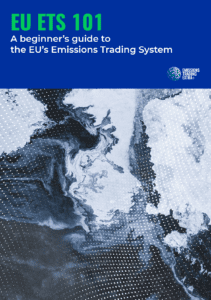Industrial Emissions Directive and climate action: key elements for a review
Executive summary
Under the EU Green Deal, the European Union is committed to reaching climate neutrality by 2050. A clean industrial transformation is urgently needed to achieve this goal. This paper proposes changes to the current industrial policy framework to ensure that the existing legislation covering industrial pollution drives a rapid transition towards zero pollution.
The Industrial Emissions Directive (IED) regulates pollution from around 50,000 large industrial installations in Europe. It requires industries to meet performance-based pollution limits, which are periodically reviewed to take into account innovation and progress. The IED aims to prevent pollution from industrial activities. All relevant environmental impacts should be taken into consideration: emissions to various environmental media (land, water and air), the use of resources such as water, energy, material or chemicals, waste prevention and general production efficiency, accident prevention, etc. This integrated approach is meant to achieve a high level of environmental protection as a whole.
However, while protecting the environment, the IED does not address greenhouse gas pollution and climate impacts directly. Instead, the regulation of greenhouse gas emissions is left to the EU carbon market (or Emissions Trading System – ETS).
Because greenhouse gas emissions were excluded from the scope of the IED with the introduction of the market-based approach of the EU ETS directive, EU governments have not set limits on these emissions when issuing environmental permits under the IED. For the same reason, it is also optional for governments to set binding energy efficiency standards based on performance on those installations that are covered by the EU ETS.
These limitations are counter-productive and incompatible with the integrated approach of the IED to prevent (all) pollution at source. They also provide little incentive to industries to invest in more environmentally friendly processes and reduce their green-house gas emissions. In light of the urgent need to tackle the climate crisis, this oversight and shortcoming need to be corrected. The revision of the industrial emissions directive is an opportunity to include greenhouse gas emissions within the scope of the legislation, and strengthen its key elements to ensure that it fulfills its full potential and yields the best environmental outcomes. The inclusion of greenhouse gas emissions within the scope of the IED does not entail duplication of regulation vis-a-vis the EU carbon market rules because both frameworks are complementary and follow different approaches. In addition, unlike the IED, the carbon market does not use the “best available technology” concept, so the IED’s best available techniques reference documents (BREFs) would be reinforcing and complementary regulation, not overlapping.
In order to drive the clean industrial transformation, different policy instruments are needed. The industrial emissions directive can and should be used to reinforce the market-based approach under the EU emissions trading scheme. For this to happen, the European Commission needs to propose deleting art. 9.1 that excludes greenhouse gas emissions from the industrial emissions directive, and to make energy efficiency standards mandatory in environmental permits. This can be done in the context of the ongoing revision of the industrial emissions directive. It is an opportunity not to be missed to ensure a new industrial policy framework that will help Europe reach its goals under the EU Green Deal.




